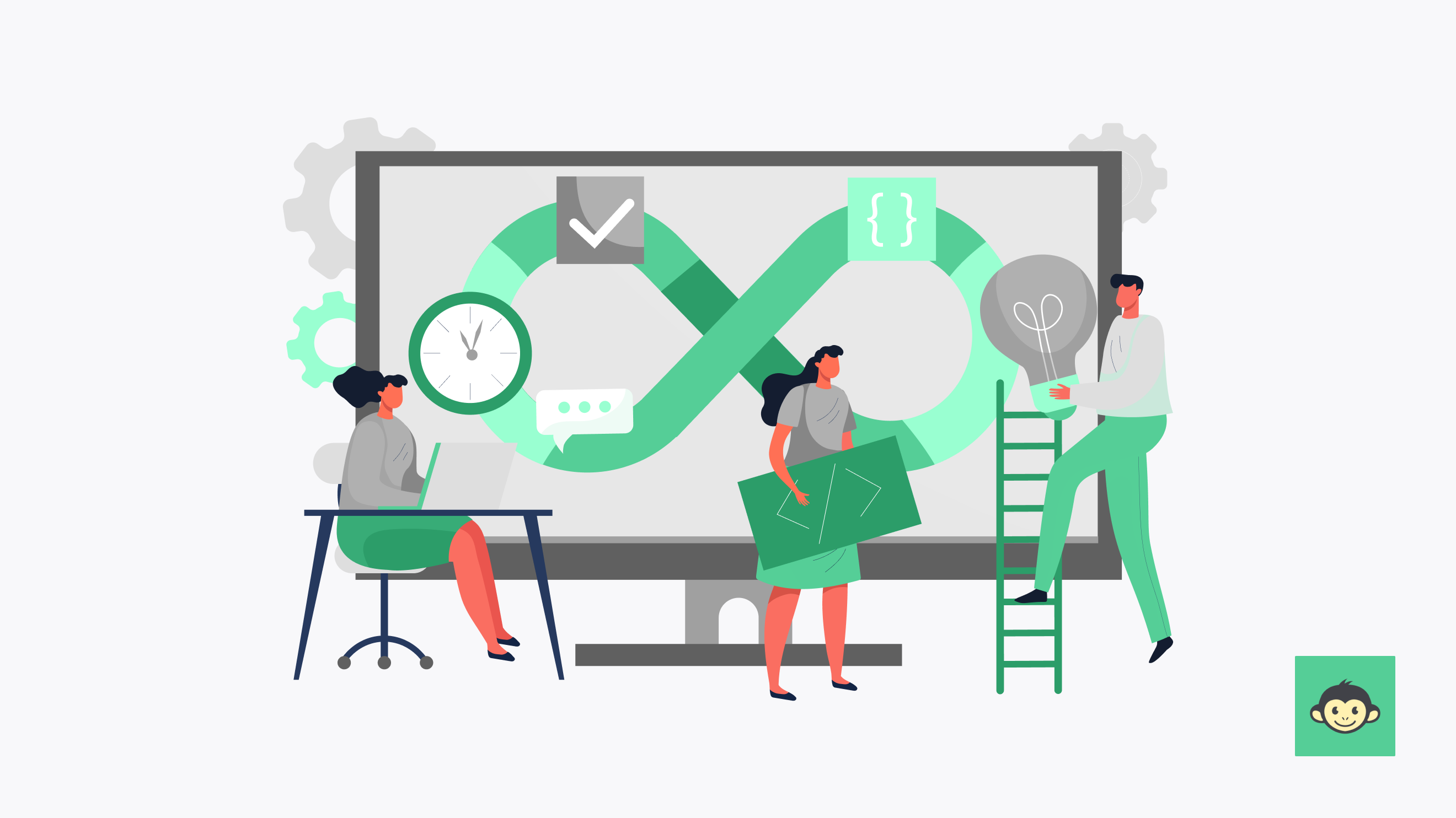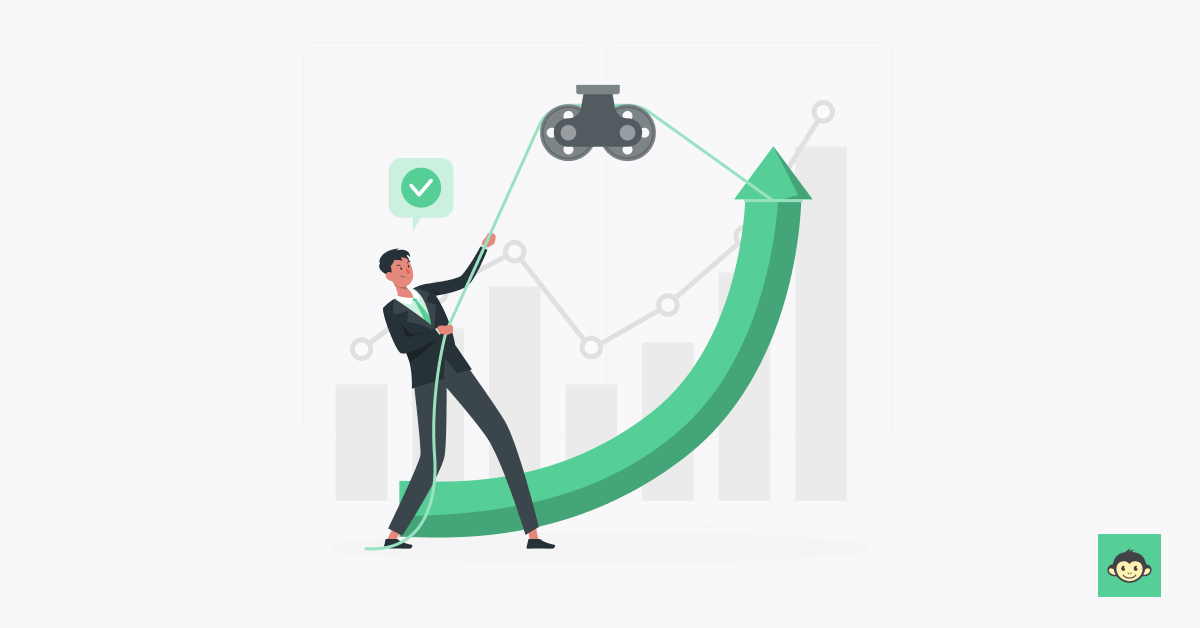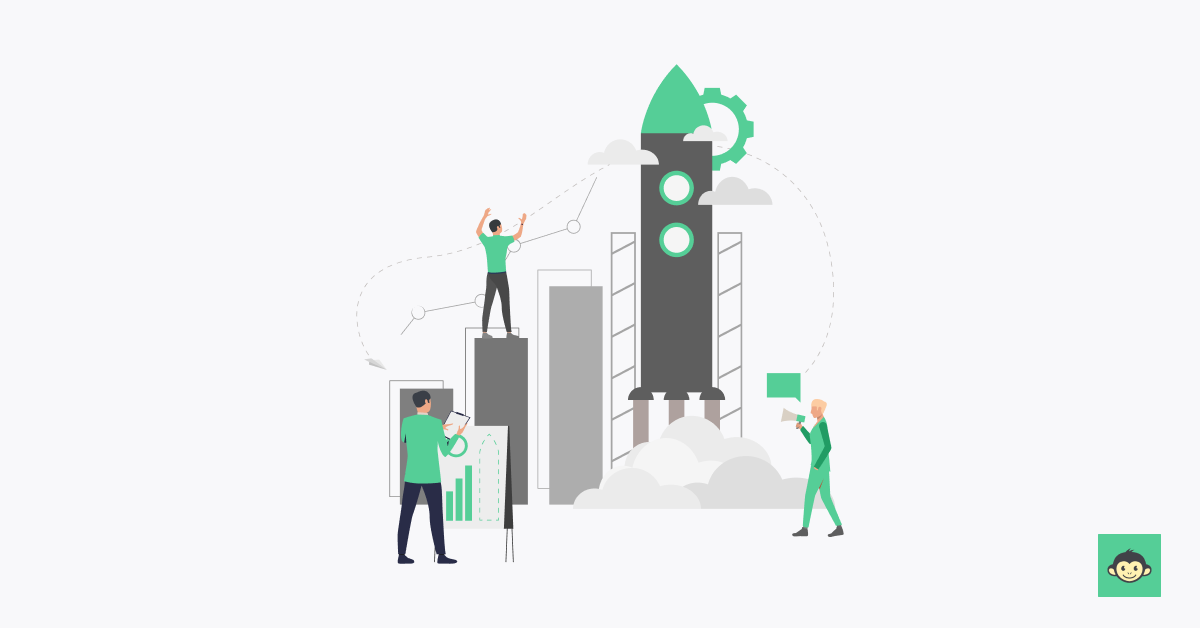How to create happier workplaces with a continuous feedback mechanism?

Is your company currently lacking a feedback system? Do you have one but feel that it could use some refinement?
Using the correct performance review phrases is not enough. You must also have a clear feedback strategy in place that helps you help your staff. That’s where a continuous feedback mechanism can come in handy.
Learn more about this approach and how you can utilize it to create a happier and more productive workplace below.
What is a continuous feedback mechanism?

A continuous feedback mechanism is a process in which an employee receives ongoing feedback and systematic guidance from a manager, supervisor, or another leader. This mechanism also allows the employee to share feedback with their leaders about how they can improve their approach.
Continuous feedback stands out from conventional performance reviews, which may take place only once or twice a year. It is, as the name suggests, continuous and helps employees stay engaged and committed to achieving their goals.
What is a continuous feedback culture?

A continuous feedback culture is an organizational environment that prioritizes and promotes ongoing communication and feedback between employees and managers.
Unlike traditional performance management models that rely on infrequent reviews, a continuous feedback culture fosters regular, timely, and constructive conversations.
In this culture, feedback is not confined to a specific timeframe; it is a continuous process integrated into daily operations. Employees and managers engage in open dialogues to discuss achievements, address challenges, and collaboratively set and adjust goals.
This approach emphasizes the importance of immediate and specific feedback, creating an atmosphere where learning and development are ongoing.
Moreover, a continuous feedback culture values transparency and mutual respect. It encourages employees to actively seek feedback, enabling them to take ownership of their professional employee growth.
The organization, in turn, benefits from improved employee performance, increased engagement, and a more agile and adaptive workforce in today's dynamic business landscape.
Enabling a continuous feedback system in your team

Enabling a continuous feedback system within your team is a strategic imperative for fostering a culture of continual improvement and enhancing overall organizational performance. A well-implemented feedback mechanism transcends the traditional annual performance review model, promoting ongoing communication between team members and leaders.
To establish an effective continuous feedback system, several key considerations should be prioritized.
Firstly, leadership commitment is paramount. Leadership should champion the importance of regular feedback and exemplify its value through consistent engagement.
This commitment creates a top-down culture that emphasizes open communication and the continuous pursuit of excellence.
Furthermore, integrating technology into the feedback process can streamline and enhance its effectiveness.
Utilizing performance management software or dedicated employee feedback tools can facilitate real-time communication, making it easier for both managers and team members to share insights, accomplishments, and areas for improvement promptly.
Such tools also provide a centralized platform for tracking feedback trends over time, enabling a more comprehensive understanding of individual and team progress.
Goal alignment is another critical aspect. Clearly defined and measurable goals should be collaboratively established, ensuring that employees have a roadmap for success.
Regular check-ins to assess progress against these goals create a framework for ongoing feedback discussions, allowing for timely adjustments and recognition of achievements.
What is continuous feedback performance management?

Continuous feedback performance management is a dynamic and iterative approach to evaluating and enhancing employee performance throughout the year.
Unlike traditional annual reviews, this methodology emphasizes regular, ongoing communication between employees and managers.
The essence of continuous feedback lies in its commitment to providing timely insights, acknowledging achievements, and addressing areas for improvement consistently.
Here are key elements that define continuous feedback performance management:
- Real-time communication: Continuous feedback operates in real-time, ensuring that discussions about performance are not confined to a specific time of the year but occur as part of a continuous dialogue.
- Goal alignment: It revolves around collaboratively setting and aligning goals that are measurable and relevant to both individual and organizational objectives.
- Constructive guidance: Emphasizes constructive guidance rather than mere evaluation, fostering a growth mindset and encouraging employees to view feedback as a tool for development.
- Adaptability and flexibility: Recognizes the dynamic nature of work environments, allowing for agile adjustments to goals and expectations based on changing business needs.
- Employee empowerment: Empowers employees to take ownership of their development by providing them with a continuous stream of insights, enabling them to address performance gaps proactively.
- Data-driven decision making: Leverages data from ongoing feedback to inform decision-making business processes, ensuring that organizational strategies are grounded in real-time performance insights.
Importance of continuous feedback

The importance of continuous feedback cannot be overstated. It is a strategic tool that not only enhances individual and team performance but also contributes to a positive organizational culture, innovation, and sustained success.
- Enhanced employee performance: Continuous feedback plays a pivotal role in elevating employee performance. By providing regular insights into strengths and areas for improvement, employees can make timely adjustments, fostering continuous growth and increased productivity.
- Promotes a growth mindset: The emphasis on ongoing feedback encourages a culture of continuous learning and development. Employees view feedback as a constructive tool for improvement, fostering a growth mindset that is essential for long-term success.
- Enhanced team collaboration: Continuous feedback fosters a collaborative team environment. Through ongoing communication, team members gain a deeper understanding of each other's strengths, enabling them to collaborate more effectively and achieve collective goals.
- Reduction of performance appraisal stress: The anxiety associated with traditional performance appraisals is significantly reduced with continuous feedback. Employees no longer have to wait for a yearly review to understand their performance; instead, they receive regular, manageable inputs.
- Increased innovation: A continuous feedback culture encourages innovation. Engaged and motivated employees are more likely to think creatively, contributing fresh ideas and solutions that can drive innovation within the organization.
- Talent retention: Regular positive feedback is a powerful employee retention tool. Employees who feel supported and recognized are more likely to stay with an organization, reducing turnover and preserving institutional knowledge.
- Customer impact: Ultimately, the impact of continuous feedback extends to customers. Employees who receive regular feedback are better equipped to enhance their skills and deliver a higher quality of service, directly influencing customer satisfaction and loyalty.
Strategies for implementing continuous feedback

How do you ensure your continuous feedback mechanism is effective? Start by utilizing the following strategies:
Timing feedback appropriately
Deliver feedback as soon as possible after you notice something (positive or negative feedback). Timely feedback allows employees to address issues sooner and prevent them from escalating.
Give feedback frequently
Give feedback regularly to help employees stay up-to-date on their performance and know where they stand.
Use varying delivery methods
Deliver performance review comments using methods that are most effective for individual employees. For example, some may respond better to verbal feedback, while others prefer to communicate in writing.
Be specific
Feedback should be specific and objective. That way, employees can understand what they need to work on, but they don’t feel that they’re being judged unfairly.
Use the right tone
When delivering feedback, strive to use a kind tone and make messages as constructive as possible. Use positive performance review phrases to keep employees engaged and prevent them from shutting down when they receive criticism.
Use the right technology
Tools like OKR Software can assist with goal setting and help you keep track of employee performance and progress over time. These solutions make it easier for you to support employees and ensure you’re delivering the most accurate and up-to-date feedback.
Encourage two-way communication
Promote an open dialogue where employees feel comfortable sharing their thoughts and concerns. Establishing a two-way communication channel fosters a collaborative environment and allows for a better understanding of each other's perspectives.
Include peer feedback
Integrate feedback from peers into the evaluation process. Colleagues often observe different aspects of an employee's performance and can provide valuable insights. This multi-perspective approach enhances the overall feedback quality and offers a more comprehensive view of an individual's contributions.
Set clear expectations
Ensure that employees have a clear understanding of their roles and performance expectations. Clearly defined expectations serve as a foundation for constructive feedback, enabling employees to align their efforts with organizational goals more effectively.
Encourage goal reflection
Encourage employees to reflect on their goals and achievements regularly. This self-reflection can enhance personal development and empower individuals to take ownership of their progress. It also provides a basis for more meaningful discussions during feedback sessions.
Celebrate successes
Acknowledge and celebrate both individual and team successes. Recognizing achievements fosters a positive work culture and motivates employees to continue striving for excellence. Incorporating acknowledgment of accomplishments into feedback sessions reinforces positive behaviors and boosts employee engagement.
Benefits of continuous feedback

When done properly, continuous feedback model offers numerous benefits for employees and employers, including the following:
Increased productivity
By sharing feedback regularly with employees, you can help them continuously improve. Ongoing improvement, in turn, can lead to better workplace performance and increased productivity.
Improved work quality
Continuous feedback doesn’t just result in employees getting more done. It can also lead to improved work quality because employees are frequently receiving information on what they can do better.
Reduced stress
Some might assume that a continuous feedback mechanism is more stressful for employees. After all, instead of receiving a review just once or twice a year, they’re getting regular feedback from their superiors.
By making feedback a more frequent thing, though, you can actually make it less intimidating. You will normalize it and create a less stressful environment for your employees.
Increased employee engagement
Continuous feedback works both ways. In addition to giving feedback, you should also be willing to accept it from your employees. Don’t accept simple self-evaluation sample answers; instead, encourage them to share their true feelings and insights.
When employees know that they’re heard and that their opinions are appreciated, they will likely be more engaged in their work.
Improved morale
Increased engagement, especially when it’s coupled with improved performance and productivity, can also lead to greater happiness and improved morale throughout the business.
Increased innovation
Productive employees who are engaged and happy are more likely to be creative and think of innovative solutions. Remember that increased innovation benefits the entire company and brings it closer to achieving its long-term goals.
Enhanced skill development
Continuous feedback serves as a platform for ongoing skill development. Regular insights into areas of improvement allow employees to focus on enhancing specific skills and staying relevant in their roles.
This continual learning contributes to individual growth and professional development.
Adaptability to change
Continuous feedback cultivates an environment where employees are more adaptable to change. Regular communication about evolving expectations and industry shifts prepares individuals to embrace change confidently, reducing resistance and promoting a culture of flexibility within the workplace.
Measuring impact and success
Regular feedback and the use of appropriate performance review phrases are only the beginning when it comes to implementing a continuous feedback mechanism successfully. It’s also essential that you check in regularly, monitor performance, and celebrate successes.
Goal setting is a key part of collaborating with employees and sharing feedback, and it’s critical that goals are measurable. By checking in regularly and measuring progress over time, managers can ensure employees are staying on track and experiencing the benefits that continuous feedback mechanisms offer.
The link between feedback and high-performance cultures

The link between feedback and high-performance cultures is a critical element in fostering organizational success. A well-established feedback mechanism contributes significantly to creating an environment where individuals and teams consistently strive for excellence.
Here are key pointers elucidating the profound connection between feedback and the cultivation of high-performance cultures:
Alignment with organizational goals:
- Feedback serves as a compass aligning individual and team efforts with overarching organizational goals.
- Regular employee feedback ensures that every action and decision is calibrated to contribute effectively to the company's mission and vision.
Continuous improvement mindset:
- A high-performance culture thrives on a collective commitment to continuous improvement.
- Feedback acts as a catalyst for refinement, encouraging employees to proactively seek ways to enhance their skills and performance.
Accountability and ownership:
- Effective feedback fosters a sense of accountability among team members.
- Individuals take ownership of their responsibilities, knowing that regular feedback provides them with the insights needed to refine their contributions.
Motivation and recognition:
- Constructive feedback, coupled with timely recognition, serves as a motivational tool.
- Acknowledging achievements and contributions reinforces positive behaviors, fueling a culture where excellence is not only expected but celebrated.
Adaptability to change:
- Feedback instills adaptability, a cornerstone of high-performance cultures.
- Employees, accustomed to regular feedback, are better equipped to navigate and embrace change, ensuring the organization remains agile in dynamic environments.
Data-informed decision making:
- Feedback provides valuable data for decision-making processes.
- Leaders in high-performance cultures rely on feedback-driven insights to make informed decisions that impact the organization positively.
Implementing continuous feedback in your organization

Implementing continuous feedback loops in an organization is a strategic process that requires thoughtful planning and commitment. Here are essential steps to ensure a successful integration of continuous feedback into your organizational culture:
- Leadership commitment: Begin with securing a commitment from leadership. Leaders must champion the importance of continuous employee feedback, setting the tone for its widespread acceptance and implementation.
- Communication strategy: Develop a comprehensive communication strategy to inform all stakeholders about the shift towards a continuous feedback loop. Clearly articulate the benefits and the expected impact on individual and organizational performance.
- Training programs: Provide training and wellness programs for both managers and employees. Equip them with the necessary skills to give and receive constructive or informal feedback, fostering a culture of openness and growth.
- Technology integration: Leverage technology to facilitate the continuous feedback loop. Implementing performance management software or dedicated continuous feedback software can streamline communication and provide a centralized platform for tracking progress.
- Feedback guidelines: Develop clear guidelines on how feedback should be delivered and received. Emphasize the importance of constructive and specific feedback to promote a positive and growth-oriented atmosphere.
- Data analysis: Implement a system for analyzing feedback data. Regularly assess trends and patterns to identify areas for improvement in the feedback process itself and in individual or team performance.
- Adjustment period: Recognize that the transition to continuous feedback may take time. Allow for an adjustment period and actively solicit input from employees and managers for ongoing processes.
Conclusion
A continuous feedback mechanism has the power to create a happier and more productive workplace, which in turn results in better work quality and outcomes for the entire company.
Follow the guidelines and suggestions shared above to deliver effective performance review phrases and provide better support to your team.



